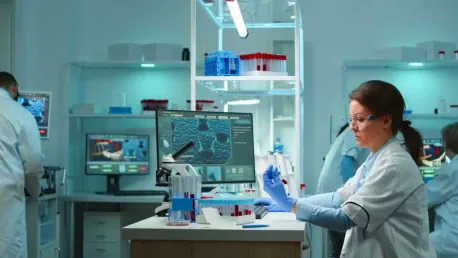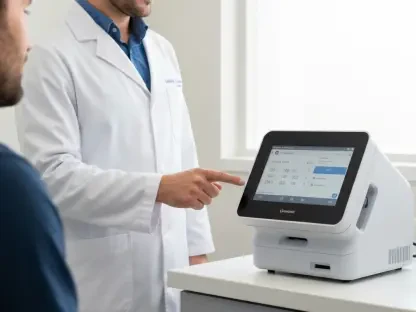The biopharma industry in the United States continues to thrive, driven by innovation, substantial funding, and strategic collaborations. As we look ahead to 2024, certain regions stand out as leading hubs for biopharma activity. The evolution of these hubs is fueled by various factors, including patent activity, funding, real estate dynamics, and contributions from key players. Here, we delve deeper into the top ten biopharma hubs in the U.S., examining the metrics and key elements that define their leading positions.
Boston/Cambridge: The Preeminent Biopharma Hub
Boston/Cambridge remains the leading biopharma hub in the U.S., thanks to its robust funding and prolific patent activity. The region’s resilience is evident despite recent headwinds, with an impressive number of biotech startups raising substantial funds in the first half of the year. This signifies the cautious but promising recovery underway in this dynamic area. Boston/Cambridge received $5.59 million in NIH funding for FY2025, underscoring its continued importance in the biopharma landscape and its capacity to spearhead innovation.
Key players such as Dana-Farber Cancer Institute, Vertex Pharmaceuticals, and Sage Therapeutics anchor the robust innovation ecosystem in Boston/Cambridge. These entities contribute significantly to the region’s research and development prowess. The region boasts a staggering 49.5 million square feet of lab space, with a 32% availability rate and an average rent of $85.39 per square foot NNN. Notable areas within Boston/Cambridge, including Cambridge’s Kendall Square, the Seaport District, Waltham/Lexington, and Watertown/Arsenal, each contribute uniquely to the dynamic biopharma environment, reflecting a varied landscape of innovation and opportunity.
New York City/New Jersey Corridor: A Powerhouse of Innovation
The New York City/New Jersey corridor also stands out as one of the most influential biopharma hubs, securing $9.08 million in NIH funding for FY2025. This region’s significant infrastructure investments underscore its continued growth and potential in the biopharma sector. BeiGene’s $800 million biologics center and Enzene’s $50 million biomanufacturing facility in Hopewell, NJ, are just a few examples of the major advancements taking place here. Nevertheless, the landscape is not without challenges, as evidenced by substantial layoffs announced by Bristol Myers Squibb in Lawrenceville, NJ.
Industry giants like Janssen, Bristol Myers Squibb, Merck, and Pfizer have made outstanding contributions to this region, cementing its status as a critical hub for biopharma innovation. The 12.6 million square feet of lab space, with 27% availability, supports a wide array of research and development activities. Rent costs vary significantly from $29.98 to $96.53 per square foot NNN, indicating a diverse real estate market that caters to a range of biopharma needs. Collectively, these factors make the New York City/New Jersey corridor a critical axis of biopharma innovation, with substantial resources and infrastructure to support its continued expansion.
San Francisco Bay Area/Silicon Valley: A Leader in Patent Activity
Ranked third overall, the San Francisco Bay Area retains its position as a leading biopharma hub, characterized by significant patent activity. With 433 patents granted among 39 research-active organizations, the region demonstrates a robust commitment to innovation and technological advancement. Despite trailing other regions in funding—receiving only $1.74 million for FY2025—the area excels in integrating cutting-edge AI technologies and attracting top talent, driven by significant entities such as Gilead Sciences, Genentech, and Stanford University.
The Bay Area’s laboratory space amounts to 39.6 million square feet, with an availability rate of 35%, echoing its strong research infrastructure. The average lab space rent of $81.84 per square foot NNN reflects a considerable investment in research and development capacity. This region’s focus on leveraging advanced technology and maintaining high levels of innovation continues to secure its position as a key player in the biopharma sector.
San Diego: A Hub of Mergers and Acquisitions
San Diego remains a vital center for biopharma innovation, despite experiencing a mixed performance in 2024. The region generated 245 patents across 34 organizations, underpinned by $4.01 million in NIH funding. The ecosystem in San Diego is marked by a robust climate of mergers and acquisitions, notable among these being Lundbeck’s acquisition of Longboard Pharmaceuticals for $2.6 billion. This transaction highlights the region’s dynamic and competitive environment, fostering significant growth and development.
With 24.3 million square feet of lab space available and a 26% availability rate, San Diego provides ample resources to support biopharma research and development. The average rent of $70.68 per square foot NNN indicates a highly competitive real estate market positioned to accommodate a variety of biopharma needs. The diversity and vitality of San Diego’s biopharma landscape continue to attract significant investment and foster a culture of innovation and progress.
Greater Los Angeles: High Efficiency Amid Real Estate Constraints
Greater Los Angeles demonstrates significant biopharma innovation across its two main clusters in central LA and Thousand Oaks. The region produced 174 patents from eight companies in 2024, backed by $2.64 million in NIH funding. Notable players in this lively biopharma ecosystem include the University of California system, Celgene, and Array Biopharma. Despite substantial innovation, Greater Los Angeles faces considerable challenges due to constrained real estate options, with only 3% of the 12 million square feet of inventory available.
The average rent here is $66.00 per square foot NNN, reflecting the premium on available lab spaces. Despite these real estate constraints, Greater Los Angeles continues to exhibit high efficiency in research and development, maintaining robust patent generation and innovative output. This region’s ability to navigate these challenges underscores its resilience and commitment to maintaining a competitive edge in the biopharma industry.
D.C. Metro Area/Maryland: Federal Research Powerhouse
The D.C. Metro Area holds a unique position in the biopharma landscape, generating 106 patents among 14 organizations in 2024 and receiving $2.89 million in NIH funding. With a strong presence of federal research entities, this region enjoys substantial infrastructural and financial support, fostering a fertile ground for biopharma innovation. The availability of lab space is fairly significant, with 24% of the 13.7 million square feet of inventory available, and the average rent is relatively affordable at $37.21 per square foot NNN.
These factors combine to make the D.C. Metro Area a notable biopharma hub. Expansions in this region include QIAGEN’s expansion in Frederick and AstraZeneca’s planned manufacturing facility in Rockville. The strategic location and robust federal support make this area a powerhouse of biopharma activity, enabling it to sustain and grow its innovative capabilities. These attributes collectively bolster the D.C. Metro Area’s status as a leading center for biopharma research and development.
Seattle: Growing Through Acquisitions
Seattle’s biopharma sector demonstrated notable growth in 2024, with the generation of 104 patents from seven organizations and attracting $3.91 million in NIH funding. The region thrives on substantial acquisitions and robust innovation, driven by key players such as Seagen, Juno Therapeutics, and Fred Hutchinson Cancer Center. Seattle’s lab space consists of 5.5 million square feet, with a 32% availability rate, and rents averaging $70.55 per square foot NNN. This relatively high rent reflects the competitive nature of the region’s real estate market tailored to biopharma needs.
One of the high-profile acquisitions, for example, is Pfizer’s $43 billion purchase of Seagen, underscoring Seattle’s importance and influence in the biopharma sector. These acquisitions not only signify external validation of the region’s research strengths but also bolster the local biopharma ecosystem by bringing in additional resources and expertise. Seattle’s growing biopharma sector continues to draw attention, positioning it as an emerging, competitive biopharma hub.
Research Triangle: Investment-Driven Growth
The Research Triangle in North Carolina displayed significant growth in 2024, marked by the generation of 74 patents from eight organizations and receiving $3.24 million in NIH funding. The region’s strength lies in considerable facility investments through major entities such as Novo Nordisk’s $4.1 billion facility and Eli Lilly’s $2 billion facility in Concord. These massive investments highlight the region’s attractiveness for biopharma operations and its forward-looking approach to industrial and academic collaboration.
Research Triangle maintains 17.1 million square feet of lab space, with a 25% availability rate and an average rent of $38.13 per square foot NNN. The favorable real estate market, coupled with significant industry-academic collaboration, ensures that the Research Triangle continues to expand its biopharma influence. This region’s impressive growth trajectory and substantial investments underscore its key role in the national biopharma landscape.
Philadelphia: A Cell and Gene Therapy Specialist
Philadelphia excels in cell and gene therapy, making it a prominent player in the biopharma sector. In 2024, the region generated 70 patents from six organizations and attracted $4.28 million in NIH funding. Philadelphia’s growth has been bolstered by significant developments such as Legend Biotech’s new R&D facility and its designation as a federal innovation hub, which makes it eligible for up to $75 million in grants. This recognition underscores the region’s expertise and potential for continued growth in cutting-edge biopharma fields.
The region maintains 7.4 million square feet of lab space, with a 24% availability rate and an average rent of $46.65 per square foot NNN. Despite recent supply growth challenges, Philadelphia’s focus on cell and gene therapy places it at the forefront of biopharma innovation. The region’s dynamic environment, driven by an effective combination of funding, strategic grants, and expertise, ensures its prominent status in the American biopharma sector.
Chicago: Strong Presence and Strategic Investments
Chicago maintains a strong biopharma presence with efficient research and development initiatives. The region received $1.52 million in NIH funding for FY2025, supporting various innovative projects. Noteworthy developments in Chicago include AbbVie’s acquisition of Landos Biopharma and continued expansion of wet lab facilities through initiatives like the Chan Zuckerberg Initiative. These strategic investments have propelled Chicago’s biopharma sector forward.
Presently, Chicago offers 8.2 million square feet of lab space, with a 28% availability rate, and rents averaging $45.00 per square foot NNN. With steady developments and a growing number of research facilities, Chicago is well-positioned to foster biopharma innovation. The region’s strategic acquisitions and infrastructure enhancements reflect its dynamic approach to maintaining a competitive and influential role in the national biopharma landscape.
Conclusion
The biopharma industry in the United States remains robust, driven by continuous innovation, significant funding, and strategic partnerships. As we approach 2024, certain regions are emerging as key biopharma hubs. These hubs are evolving due to a combination of factors like patent activity, financial investment, real estate trends, and the participation of influential entities.
Looking ahead to the leading biopharma hubs in the U.S., it’s clear that each region’s competitive edge is bolstered by specific metrics and key factors. Patent generation signals the region’s innovative capacity, while substantial funding often indicates strong investor confidence and financial support for new ventures. Real estate dynamics, such as the availability of specialized lab spaces and manufacturing facilities, further support growth in these hubs. Contributions from key players, including established pharmaceutical companies, biotech startups, research institutions, and universities, play a crucial role in fostering an environment ripe for breakthroughs.
These leading biopharma hubs are not only anchoring the U.S. industry but also setting global standards in biopharmaceutical advancements. As we continue to monitor these regions, their ongoing development will undoubtedly shape the future landscape of the biopharma sector, making them focal points for research, development, and commercialization of new therapies and technologies.









